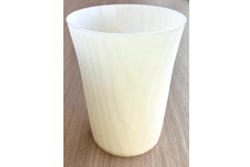
Editor's Note: The views expressed in this column are solely those of the author.
A growing problem is killing new product development at small and midsize manufacturers. It is deliberate patent infringement by larger corporations that I call the "new product piracy model."
The new product piracy model works because stealing new ideas saves time and money, particularly in development. If the legal costs don't exceed the profit from the stolen product, then it is worth the risk.
A good example of how this works is Let's Go Aero (LGA), a small manufacturer in Colorado Springs, Colorado, that makes compact trailers, camper trailers, bike racks, and hitch pins. Marty Williams is the president and founder of LGA. In 2003, Marty designed a new bike rack that could hold two bikes on the rear of a car and in 2007, he applied for a patent.
In 2007, he also took his new invention to the Specialty Equipment Manufacturers Show (SEMA), and it was a big hit. He became interested in signing a licensing agreement with a company that had the manufacturing capabilities, distribution channels, and resources to quickly bring his product to North America.
Marty signed a licensing agreement with a large corporation, the Cequent Group, in January 2008. The Cequent Group was the world's largest manufacturer of towing equipment. The agreement called for an upfront payment of $400,000 and a 7% royalty fee on every product sold.
Things were going very well for Marty and LGA, but by 2010, everything started to change. By that time, Cequent had complete control of the product, and in January 2010, Cequent cut off royalty payments to LGA.
By late 2010, this dispute resulted in a lawsuit, and the resulting litigation would embroil Marty's company for more than 10 years.
The way Cequent handled this licensing agreement is a business strategy used by many large corporations to access good new product ideas and reduce their upfront developmental costs by as much as 40%. Here's how it works:
- A large corporation finds a new product they would like to market.
- They entice the smaller company into signing a manufacturing or marketing agreement and pay the inventor royalties.
- Once the large company has the engineering and tooling, they give it to a Chinese company to manufacture a "knockoff" product.
- The pirate company stops paying the agreed-upon royalties and markets the knockoff product under a new name.
- The original inventor is forced to sue the larger corporation and drawn into a long court battle during which they will likely run out of money and give up.
- The loss of product sales, future sales, and royalties, along with the cost of litigation, potentially bankrupts the small company.
LGA also had an agreement with a company named Forcome Co. Ltd., which illegally made 20,000 bike wing racks in China using LGA tooling sold under the Walmart brand without paying royalties.
After almost eight years of litigation, LGA won an award in the Cequent matter, but it was very small. The company also recovered $600,000 in legal fees for their attorneys. LGA also won an arbitration case against Forcome in December 2022, but it took until April 2024 to collect. The payment to settle the Forcome case was $1 million, and LGA netted about $800,000 after legal fees.
LGA spent about $2.6 million over 12 years to collect about $1.7 million and get clean title to their property. Marty said he would not do it again, even if he knew he would get a 100% recovery—or even a multiple of recovery. In retrospect, Marty isn't sure the legal system works for small companies and feels like it's "broken."
In 2012, I wrote "David vs. Goliath – Stealing Innovation" about Dan Brown, who invented the Bionic Wrench, a tool that could be used on various sizes of nuts and bolts. He patented the wrench in 2005 and then formed LoggerHead Tools to bring it to market.
In 2009, LoggerHead signed an agreement with Sears to perform a test sale. The product sold out, and Sears ordered 75,000 Bionic Wrenches the following year. But after a short time, Sears and a U.S. distributor named Apex went to China to create a knockoff product called Max Axcess that looked exactly like the Bionic Wrench—right down to the "try me" packaging. Dan and LoggerHead filed suit against Sears and Apex in 2012 over patent infringement.
It took five years, but a 2017 jury found that both Sears and Apex infringed on Brown's patent, and the judge awarded Loggerhead $5,979,616. Sears appealed the case, and in 2018, the jury verdict was thrown out—the judge ruled in Sears and Apex's favor, saying that the "knockoff" wrench did not infringe on Brown's patent. Brown had invested more than $100,000 out of pocket, including endless hours of his own time, into the lawsuit.
There are many examples of new product piracy, but the most popular are watches, shoes, clothing, electronic products, medical equipment, cosmetics, jewelry, pharmaceuticals, after-market auto accessories, and software. The Office of the U.S. Trade Representative says, "The rapid growth of e-commerce platforms has helped fuel the growth of counterfeit and pirated goods into a half-trillion-dollar industry."
My effort to summarize what is happening left me with three important questions:
1. Is it worth the time and expense of getting a patent when a patent does not appear to protect the inventor, company, and product like it used to?
There are two types of patents: design patents and utility patents. Although design patents do not give you full protection, they can still give you ample protection in a court of law and are only 10% of the cost of a utility patent. If you are a small manufacturer with limited resources, you should probably file design patents on all your unique designs. You should also make sure you are registering your trademarks, which can help you to force resellers like Amazon to delist knockoff products that infringe on your registered trademark.
2. Should small companies pursue manufacturing and marketing agreements with larger manufacturers?
Finding a company that can manufacture and distribute your product in a market you can't reach on your own is a viable strategy for a small company with limited resources. But beware of making a deal with huge corporations who source products from China.
If you are approached by a company that wants a licensing arrangement to distribute and manufacture your products, commit your team to a long vetting process. At a minimum, it is vital to find out if the company has license agreements with other companies and then follow up with each company to determine if there have been problems.
Approach the vetting process like you were going to hire a CEO who was going to get the keys to your business. The licensing partner will have your engineering and tooling and the ability to knock off your product and make it in China. So, finding out about your partner before you get married is vital.
3. Can Congress be trusted to enact legislation to protect small manufacturers and inventors?
The short answer is "no." Congress passed the America Invents Act (AIA), which, in 2011, changed the patent system from "first to invent" to "first to file." Critics argue that the new system will benefit large multinational corporations at the expense of inventors and small businesses because the post-grant procedures invalidate patents at rates above 75%.
The AIA also created a Patent Trial and Appeal Board (PTAB), which "allows third parties to easily challenge the validity of an issued patent, often with a lower burden of proof, which can lead to a high rate of patent invalidation and create significant uncertainty for patent holders."
The PTAB is a distinct advantage for multinational corporations that have substantial financial resources and are determined to steal new products from smaller companies. It would take a significant lobbying effort to change the AIA to benefit small companies.
I don't think the average inventor has any idea how much time, money and litigation it takes to resolve these disputes or that the court system is not on their side. Under current laws, inventors and small businesses stand little chance against larger corporations willing to absorb the cost of litigation of patent infringement in order to acquire new products without doing the research and development. As long as the cost of litigation is projected to be lower than the R&D costs, large corporations will continue to use the piracy model.
As a country, we are all betting on our ability to innovate to win the globalism game. A big part of innovation is the thousands of new ideas and successful new products invented by small and midsize manufacturing companies. If we allow larger companies to steal these products and make them in China, the country will shoot itself in its proverbial innovation foot.
Michael Collins is the author of "Dismantling the American Dream: How Multinational Corporations Undermine American Prosperity." He can be reached at mpcmgt.net






















